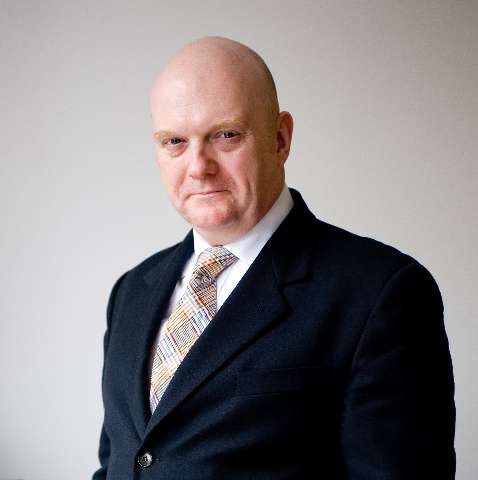Mats Ek’s take on Romeo and Juliet was made a decade ago to celebrate the 250th anniversary of the founding of Royal Swedish Ballet. The inversion of Shakespeare’s title not only brings Julia (as she is called here) rightly to the fore, but it also serves as a metaphor for the traditional narrative being turned inside out. It seems as if Shakespeare wrote the play in a code that only Ek has been able to decipher.
Ek’s vision of the romantic tragedy is seen through a distorted lens. Some of his revelations are fascinating; others bemusing, while parts of the structure remain essentially the same. For example, Julia's initial playfulness (Ek has her hiding under the Nurse’s voluminous skirt) and her coy introduction to Paris are just as clear as in Kenneth MacMillan’s production. Elsewhere, other intentions seemed as murky as the smoke that frequently hovered over the stage. There is, for example, no Friar in this drug-free ballet and Juliet is apparently killed by her father (not Lord Capulet but merely ‘Father’). There is much use of a trap in the centre of the stage: a pond from which Romeo emerges at the ballet’s commencement and a grave into which the dead couple disappear leaving just their legs sticking out like broken branches; a device then copied by the entire corps, laying on their backs like dead flies as the curtain fell.
Ek’s vision of Verona is thoroughly modern and surreal. Tybalt’s wet-look, fake leather trousers suggested that he had just returned from a night’s clubbing, an image reinforced when the character began the second act nursing a hangover! Tybalt’s latent homosexuality is subsequently taunted by Mercutio, topless and wearing a tutu. Perhaps the most interesting costume choice is the narrow-brimmed, high-crowned headwear for Tybalt’s thugs, which for Brits of a certain age would surely be reminiscent of the oversized hats worn by Ken Dodd's “Diddymen”.
The set is defined by moveable screens pushed into place by the performers, appearing like panels from a climbing wall, for which purpose they were frequently used. And the prop equivalent of the quirky hats was the town’s militia incongruously riding about on Segways: in a strange life-imitating-art moment, I had seen two Swedish policemen patrolling on the same vehicles as I walked to the opera house!
The act one narrative is especially confusing. I saw Ek’s ballet when the Royal Swedish Ballet performed it at Sadler’s Wells, in 2014 (sadly, they haven’t been back since) and forewarned is certainly forearmed. There is no obvious family feud between the unmentioned Capulets and Montagues (the latter’s Lord and Lady also don’t exist in Ek’s scenario) and Julia has no friends. The second act, aggregating what we would normally associate as Acts 2 and 3, is performed on fast forward!
A significant break from the norm is that Ek has turned away from the Prokofiev score, preferring instead to use extracts of Tchaikovsky’s works in a bespoke composition arranged by Anders Högstedt. Another element that worked well is the rich variety of light and shadow created through the lighting designs of Linus Fellbom.
Dancers routinely extended their legs to the fullest, before breaking the line at the knee and flexed limbs, physical humour and expressiveness dominated Ek’s choreography. The aged prince (Yvan Auzely) performed a solo that consisted of repetitively throwing one arm backwards and vigorously kicking his legs back like a dog covering its faeces, while holding onto a panel; repeating the same simple exercise on both sides of the screen, a choreographic device that I took to represent the challenge of maintaining order between two factions.
Without weapons, violence is implied. Tybalt (Daniel Goldsmith) and Romeo (Anthony Lomuljo) carry out a virtuoso jumping duel while the father (Dawid Kupinski) kills Julia by extending an arm with pointed fingers that never touch her. Despite this coyness over violence, Ek brings a malevolent moment of vindictiveness when Tybalt urinates over the corpse of Mercutio (Daniel Norgren-Jensen) who he has killed by slamming him against the proscenium arch. The role of Benvolio is chunkier than the norm and Dmitry Zagrebin (well-remembered from his Gopak performance in the Men in Motion programme at the Coliseum last year) gave a strong account of this more sensible friend.
Madeline Woo was an enchanting and charismatic Julia. There is no balcony scene but in a moment that reminded me of Fred Astaire dancing up the walls in the film Royal Wedding, Woo descends horizontally down the side of one of the panels to meet Romeo in the garden for their passionate duet that closed the first act. Lomuljo also danced as Romeo when I saw the performance at Sadler’s Wells nine years ago and the maturity of his role development since then shone through in an expressive performance full of the wonderment of first love. Even in this radically altered scenario, it is still the chemistry between the lovers that matters, and it did.




